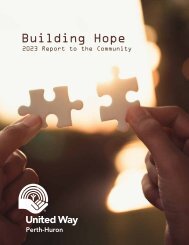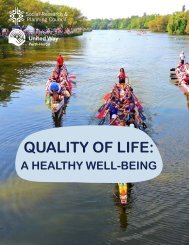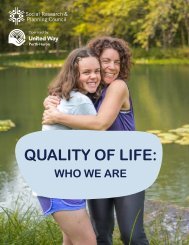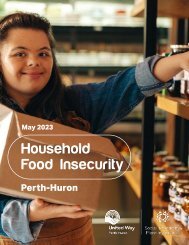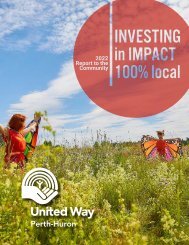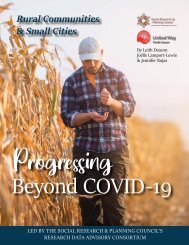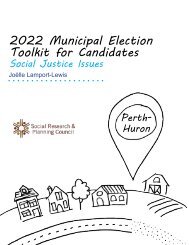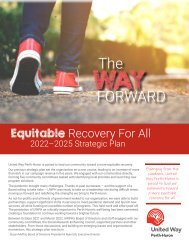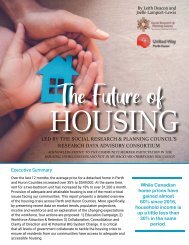2021 Supportive Housing Report
This report is designed to help enhance an understanding of homelessness and the role supportive housing can play within a larger strategy to end chronic homelessness. It provides an overview of best practices being implemented to address chronic homelessness; references supportive housing strategies that help people with the most complex mental health and addiction needs to stabilize their housing; and offers strategic actions for consideration to support the Huron and Perth communities toward achieving their goals of eradicating chronic homelessness and supporting their most vulnerable citizens.
This report is designed to help enhance an understanding of homelessness and the role supportive housing can play within a larger strategy to end chronic homelessness. It provides an overview of best practices being implemented to address chronic homelessness; references supportive housing strategies that help people with the most complex mental health and addiction needs to stabilize their housing; and offers strategic actions for consideration to support the Huron and Perth communities toward achieving their goals of eradicating chronic homelessness and supporting their most vulnerable citizens.
You also want an ePaper? Increase the reach of your titles
YUMPU automatically turns print PDFs into web optimized ePapers that Google loves.
Figure 4: Development of a Coordinated Access Priority List<br />
Source: Adapted from OrgCode Consulting Inc. 56<br />
supported to complete the paperwork necessary to<br />
receive an offer of housing as quickly as possible.<br />
Further refinement of the BNL list creates a Priority List<br />
of the people who have completed all the necessary<br />
steps to accept an offer of housing immediately. The<br />
Priority List is organized to show the depth of each<br />
person/family’s need, and people are matched with the<br />
most appropriate resources as they become available.<br />
Figure 4 illustrates how local homelessness information<br />
is distilled and developed into a meaningful priority list<br />
of people who are ready to accept housing offers.<br />
How are people matched with the best level<br />
of supportive housing to meet their needs?<br />
Acuity is measured using an assessment tool. Acuity<br />
speaks to the severity of a presenting issue. With<br />
regards to housing, acuity refers to the level of<br />
complexity of a person’s needs. It is used to determine<br />
the appropriate level, intensity and frequency of case<br />
managed supports required to help sustainably end a<br />
person’s homelessness. This includes systemic issues<br />
such as poverty and housing costs, as well as individual<br />
risk factors including mental health issues, addictions,<br />
social supports, life skills, domestic violence, trauma,<br />
education, employment, and age.<br />
Acuity is a relatively new term in community and social<br />
services systems. Comparatively, acuity is a term long<br />
entrenched in the healthcare system. The assessment<br />
and the meaning of acuity varies across the spectrum of<br />
health and community care services, most obviously<br />
when referring to ‘high acuity’.<br />
As is common when words are appropriated, the word<br />
can take on new meaning and thus lead to some<br />
confusion across sectors. For example, high acuity<br />
related to housing vulnerability is quite different from<br />
high acuity related to medical treatment and care.<br />
When used in healthcare settings, acuity refers to an<br />
individual’s level of illness severity or their severity of<br />
medical needs. For example, the Canadian Triage and<br />
Acuity Scale (CTAS) is a 5-point scale that hospital<br />
emergency rooms use to evaluate a patient’s acuity<br />
level to more accurately define the patient’s needs and<br />
allow for timely care. 57 The CTAS scale ranges from the<br />
highest level of acuity ‘requires resuscitation’ to the<br />
lowest level of acuity ‘requires non-urgent care’. Most<br />
people would agree that ‘requires resuscitation’ is not a<br />
fit for high acuity when assessing housing vulnerability<br />
or supportive housing need.<br />
Referencing ‘high acuity’ when referring to housing<br />
vulnerability, support and/or medical needs can be<br />
confusing. To improve cross sectoral collaboration and<br />
service coordination between health and housing<br />
10 <strong>Supportive</strong> <strong>Housing</strong>



